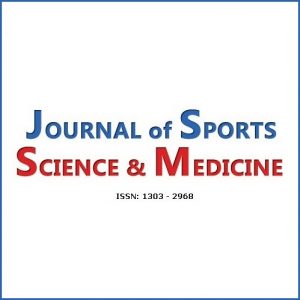Publications

Effect of Post-Exercise Massage on Passive Muscle Stiffness Measured Using Myotonometry – A Double-Blind Study
Authors: Pui W.Kong, Yao H.Chua, Masato Kawabata, Stephen F.Burns, Congcong Cai
Affiliations: Physical Education and Sports Science Academic Group, National Institute of Education, Nanyang Technological University, Singapore; Ng Teng Fong General Hospital, Jurong Health Services, Singapore
Journal: Journal of Sports Science & Medicine - December 2018, Volume 17, Issue 4, Pages 599–606 (DOI: n/a; PMCID: PMC6243630 PMID: 30479528)
-
Field & Applications:
- Sport
- Warm-up / Recovery
It is commonly believed that massage can reduce muscle stiffness and is desirable for recovery from exercise. However, the effect massage on muscle stiffness following eccentric exercises is currently unknown. This study aimed to examine the effect of post-exercise massage on passive muscle stiffness over a five-day period. A randomised cross-over study design was adopted. After 40 minutes of downhill running, 18 male recreational runners had one leg received a 16-minute massage and the contralateral leg received a 16-minute sham ultrasound treatment. Passive stiffness for four leg muscles (rectus femoris, biceps femoris, tibialis anterior, and gastrocnemius) was assessed using myotonometry at baseline, immediately post-run, post-treatment, 24, 48, 72, and 96 hours post-run. A 2 (treatment) × 7 (time) mixed ANOVA was conducted with a robust procedure on the myotonometry data of each leg muscle to examine the effect of treatment on stiffness. Passive stiffness for all muscles changed over time but no treatment effect was found. Stiffness increased at 24 hours post-run and remained elevated from baseline levels for up to 96 hours across all four muscles. Significant treatment × time interaction was only found in the tibialis anterior but no post-hoc differences were identified. Passive stiffness of major leg muscles increased after a bout of unaccustomed eccentric exercise and remained elevated for up to four days post-exercise. Compared with the placebo treatment, post-exercise massage had no beneficial effect in alleviating altered muscle stiffness in major leg muscles.
Key points
- Passive stiffness of major leg muscles increased after a bout of unaccustomed eccentric exercise and remained elevated for up to four days post-exercise.
- Compared with the placebo treatment, post-exercise massage has no beneficial effect in alleviating altered muscle stiffness in major leg muscles.
- Monitoring passive muscle stiffness using myotonometry may provide useful information for coaches and clinicians on the recovery status of athletes.
Keywords: Eccentric, running, Myoton, soreness, pain, Swedish.
Passive muscle stiffness measured using myotonometry increased after a bout of unaccustomed eccentric exercise and remained elevated for up to four days post-exercise in major leg muscles. Monitoring passive muscle stiffness using myotonometry may provide useful information for coaches and clinicians on the recovery status of athletes. During recovery, post-exercise massage was not more effective than the placebo treatment in alleviating the altered muscle stiffness in the quadriceps, hamstrings, and calf. For the tibialis anterior, there may be subtle beneficial effect of massage in attenuating the increase in muscle stiffness. When considering massage as a recovery strategy after training and competitions, coaches and athletes should be aware that massage is generally not effective in enhancing the recovery of stiffened muscles in the quadriceps, hamstrings and calf.


